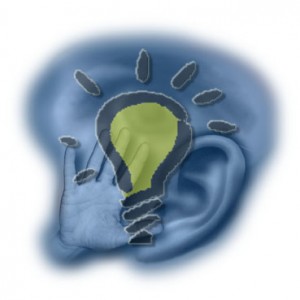Feb 19th, 2010 by Frank LaBanca, Ed.D.

shaneevans.com
The tyranny of the bell: the industrial model we use in secondary education to promote student learning and achievement. The bell schedule consists of 45-minute periods where students engage in learning a discipline, then compartmentalize and move on to the next discipline. It is an honored tradition in the educational institution, yet some are looking to move to alternative methods for promoting student learning.
The most noticable format is the block schedule. Instead of a traditional 7 or 8-period day, the teaching and learning occurs in approximately 4 1.5-hour blocks. The block model is often credited for promoting greater depth (although not necessarily bredth) of understanding. In a well-planned block, students can often deeply engage in their learning and become more authentic producers of information. I have often heard a description that I would consider a failed use of the purpose of the block: “I gave a test for the first half and then lectured the second half.” This is really no different than 2 45-minute blocks. If X=45 minutes of learning and Y=45 minutes of learning, then using X+Y as a block, surely wasn’t what was intended. Nonetheless, I am getting off track of what I wanted to write about . . .
I teach an applied science research class, where students develop and carry out their own projects over the course of a year. What I am finding, is that both a 45-minute or a 1.5-hour timeframe are not enough. I want, (I need) 3+hour blocks. Yesterday, during February vacation, I had my lab open for students to work. Some arrived at 9:30, some thereafter, some stayed for 4 hours, some for 8, some for 10. One worked at Yale in the morning on an SEM, and then came to the school midafternoon and stayed until 7:30. It was all about FLEXIBILITY.
Flexibility to learn as appropriate for the individual student. Some were conducting experiments, some were using the computer lab to work on a poster, some were mounting posters, some were conferencing with me, some were organizing binders of research reports, some were conducting statistical analyses like ANOVAs, some were on their cell phones making arrangements for data collection at a different lab. Each was doing what they needed to do to be successful. Each was motivated – much of it was internal, but the external pressures of completing an assignment and presenting it for an audience of practicing scientists and engineers that weekend.
I was the principal investigator running my lab. My students, the project managers, were engaged in behaviors of the scientific and engineering researchers. We were THE community of practice. We weren’t trying to be like scientists (“like real life”). We were DOING it.
Interestingly, we couldn’t do what we were doing – such deep learning, such authentic learning, if we were under the tyranny of the bell. Vacation from school afforded us the opportunity to learn (in the case of this class) better than we could under normal “educational” circumstances. I don’t know how we can operationalize this kind of learning strategy in a systemic way, and honestly don’t know if I want to all of the time . . .

www.kyb.mpg.de
What I do walk away knowing, is that education MUST take place in a variety of places and formats. What I do know is that when the teacher assumes the role of the facilitator rather than the disseminator of knowledge, students certainly construct their knowledge better. Better learning . . . isn’t that what we’re all seek?